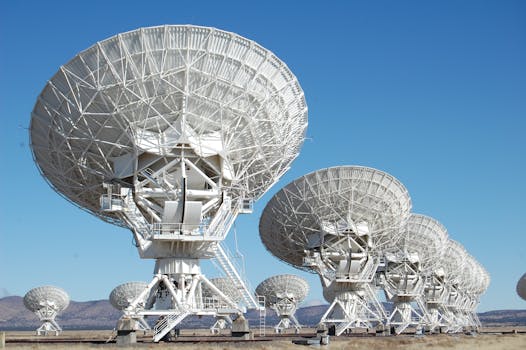
Satellite Telecommunications 2023: Key Developments and What They Mean for the Industry
Satellite Telecommunications 2023 has been a remarkable year for the satellite telecommunications industry, with numerous key developments and innovations that are transforming the sector. The industry has witnessed significant advancements in technology, increased investment, and a growing demand for satellite-based services. In this article, we will explore the key developments in satellite telecommunications in 2023 and what they mean for the industry.
Advances in Satellite Technology

One of the most significant developments in satellite telecommunications in 2023 has been the advancement in satellite technology. The launch of new satellite constellations, such as the Amazon Kuiper System and the OneWeb constellation, has increased the availability of satellite-based services and improved the quality of connectivity. These new constellations offer faster speeds, lower latency, and greater reliability, making them an attractive option for a wide range of applications, including broadband internet, mobile networks, and IoT devices.
The development of new satellite technologies, such as phased array antennas and digital payloads, has also improved the efficiency and flexibility of satellite communications. Phased array antennas, for example, allow for the simultaneous transmission and reception of multiple signals, increasing the capacity and reducing the cost of satellite communications. Digital payloads, on the other hand, enable the reconfiguration of satellite communications on the fly, allowing for greater flexibility and adaptability in response to changing demands.
Increased Investment and Partnerships

The satellite telecommunications industry has also seen a significant increase in investment and partnerships in 2023. Companies such as SpaceX, Amazon, and Google have invested heavily in the development of new satellite constellations and technologies, while partnerships between satellite operators, equipment manufacturers, and service providers have enabled the creation of new services and applications.
The growth of the satellite telecommunications industry has also attracted the attention of governments and regulatory bodies, which have begun to take a more active role in shaping the industry’s development. The Federal Communications Commission (FCC) in the United States, for example, has established new regulations and guidelines for the deployment of satellite constellations, while the European Space Agency (ESA) has launched initiatives to support the development of the European satellite industry.
Growing Demand for Satellite-Based Services

The demand for satellite-based services has also grown significantly in 2023, driven by the increasing need for connectivity and communication in a wide range of applications. The growth of the IoT, for example, has created a demand for low-cost, low-power satellite connectivity solutions, while the increasing use of satellite-based services in the aviation and maritime industries has driven the development of new technologies and applications.
The use of satellite telecommunications in emergency response and disaster recovery has also become more prevalent in 2023. Satellite-based services have been used to provide critical communications and connectivity in response to natural disasters, such as hurricanes and wildfires, and have played a key role in search and rescue operations.
See more:







